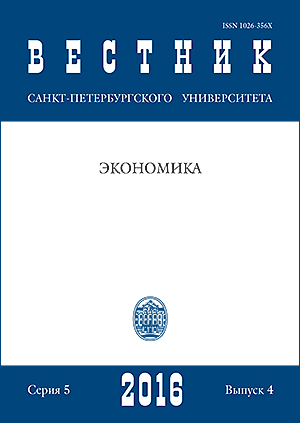Forecasting the economy development based on a stochastic model of economic growth given a turning point
DOI:
https://doi.org/10.21638/11701/spbu05.2016.401Abstract
The article notes the increasing infl uence of uncertainty and risk factors on the economic development in modern conditions. Some opportunities to consider this impact are connected with the use of stochastic models for economic growth. The authors study the methods of forecasting the economic development based on a discrete stochastic approximation for the constraints of the economic growth model using the Euler-Maruyama method. The proposed approach permits constructing the mean calculated economic growth trajectory starting from the current (initial) state. The method implementation in the simulation mode is presented with regard to the turning point induced by the 2008 global economic crisis. Special attention is drawn to the characteristic features of the proposed method and the problem of the economic growth stochastic model calibration. Th e calculations of GDP and consumption expenditure trajectories are performed according to the data for Greece, Denmark, and Spain in two time periods — before and aft er the 2008 crisis. Th e sets of model parameters are found
that provide the compliance of the actual trajectories with 50% confi dence intervals of calculated values of the macroeconomic indicators under consideration. It is shown that the use of the baseline data defi ned in fi xed 1970 prices for the forecast calculations can increase the compliance. Refs 36. Figs 12. Tables 12.
Keywords:
economic development, forecast methods, macroeconomic indicators, stochastic model, discrete approximation, simulation, growth trajectory, confidence interval, turning point
Downloads
References
References in Latin Alphabet
Translation of references in Russian into English
Downloads
Published
How to Cite
Issue
Section
License
Articles of the St Petersburg University Journal of Economic Studies are open access distributed under the terms of the License Agreement with Saint Petersburg State University, which permits to the authors unrestricted distribution and self-archiving free of charge.






